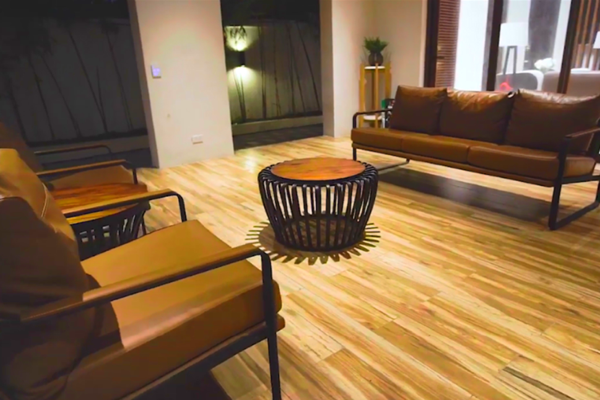The smart home is a paradigm that allows the automation of various functions at home. There are many advantages to turning your house into a smart home. Some home automation platforms like Apple Siri, Amazon Alexa, and Google Home have led to the widespread implementation of smart homes. Such technological solutions utilize sensors to measure and adjust different parameters at home. With these solutions, you can automatically adjust the temperature, light, etc.
However, for some applications, linear motion is necessary. In such scenarios, the aforementioned home automation platforms cannot solve the problem. What home applications do require linear motion? The following are some good examples:
- A standing desk for your home office
- A motorized lift for your TV screen
- Actuated blinds for your windows.
In these applications, you need to integrate a linear actuator into the existing infrastructure. But do not worry; we will explain this topic later. For the moment, we will discuss how you can start implementing some home automation solutions. Ready? Let’s begin!
1. Ensure Proper Wireless Connectivity
In a smart home, most electronic devices and appliances are connected to the Internet. They also are interconnected with each other. Therefore, wireless communications play a key role in the implementation of a smart home. So, first, you must ensure you have proper wireless connectivity to the Internet all over the house.
2. Get to Know the Components of a Smart Home
Before you start buying home automation products, it will be useful to get acquainted with the components of a smart home.
- Sensors. These devices detect and measure the different indoor parameters in your house (temperature, humidity, etc). Some sensors can detect motion or changes in light levels. In most cases, you can set up the sensitivity of your sensors to your specific needs.
- Actuators. These devices perform the different functions of a smart home. They usually are activated by signals coming from sensors, although that’s not always the case. Switches, motors, and linear actuators are examples of these devices.
- Controllers. These devices provide a user interface to interact with sensors and actuators remotely. In most cases, a smartphone, tablet, or personal computer can work as a controller with adequate software installed. With this software, a controller can send notifications about unusual events happening at home.
Now, with this information, you can start to think about the devices you need to automate different areas of your house.
3. Choose an Automation Platform
To start implementing a smart home, you should choose an automation platform. The three most common platforms are offered by Google, Amazon, and Apple. Which one should you choose? It depends on preference and the type of devices you already have. For example, if you are a fan of iPhones and iPads, choosing the Apple platform would be the obvious choice.
However, if you are looking for a platform that supports the largest number of devices, you should choose Amazon Alexa. The Apple platform is the most restrictive because of the strict control of this company over the integration of third-party devices. However, all platforms have their pros and cons. So, you should research all your options before you choose a platform for your smart home.
4. Implement Some Basic Automation Projects
Converting your house into a smart home does not have to be expensive. You can start to automate one part of your house at a time. In this way, the initial investment will not be so big. What’s more, you can start automating your home with DIY projects. We give you some ideas below.
Smart Lighting
Most people interested in smart homes like the apartments near Wilmington begin their journey by implementing smart lighting. You can find in the market several smart lighting systems that do not require a hub or central controller. However, make sure the system you choose is compatible with the automation platform you already chose. For example, if you decide to automate your house using Amazon Alexa, make sure the smart lighting system can interact with other Alexa devices.
You can choose to use smart bulbs to build your smart lighting system at home. Alternatively, you can use smart switches for better control of your lights.
Smart Thermostats
Adding smart thermostats to your cooling and heating systems can deliver ultimate comfort. Moreover, it will help reduce energy consumption. A smart thermostat can establish schedules for cooling and heating automatically. What’s more, a smart thermostat with a motion sensor can detect when you are at home. In this way, your HVAC system will be activated only when needed.
A Motorized TV Lift
Motorized TV lifts are common in smart homes. This device uses a linear actuator to lift or drop the entire TV screen as needed. When you are not watching TV, the lifter will hide the TV screen inside a cabinet. When you want to watch TV, you press a button on the remote control to have the TV screen appear from inside the cabinet.
Author Bio:
Hayley Mann is a technology enthusiast specializing in automation methods of ergonomics devices. Her engineering background helps her to create interesting articles on technical topics, making them understandable for all readers.

No comments:
Post a Comment